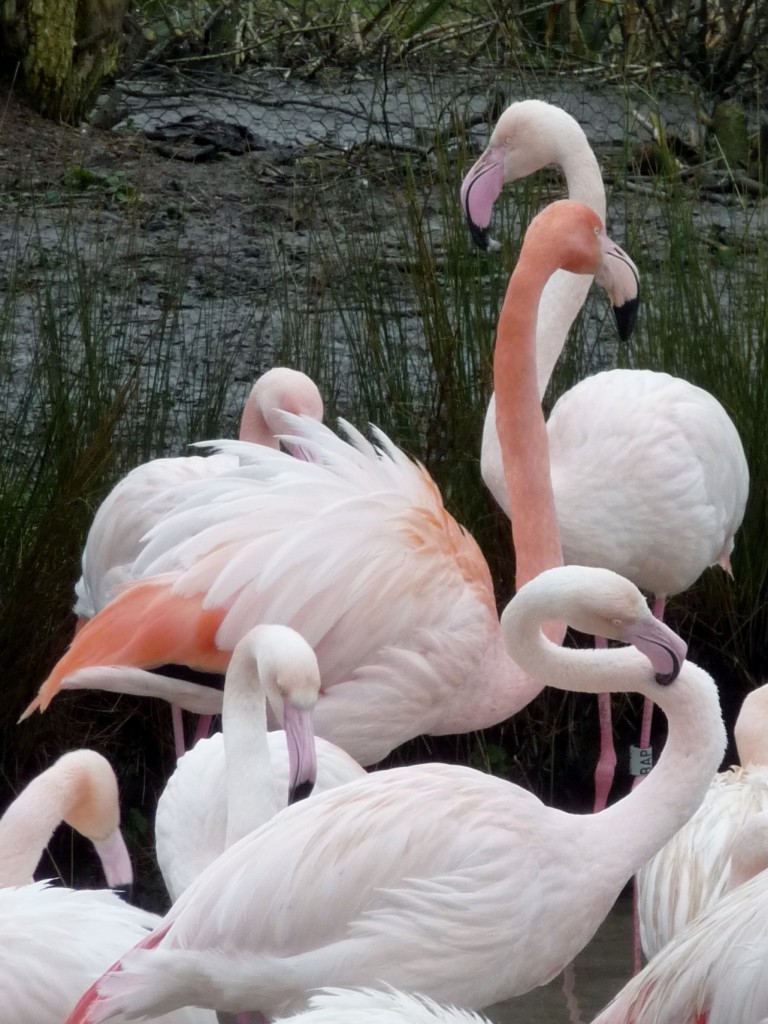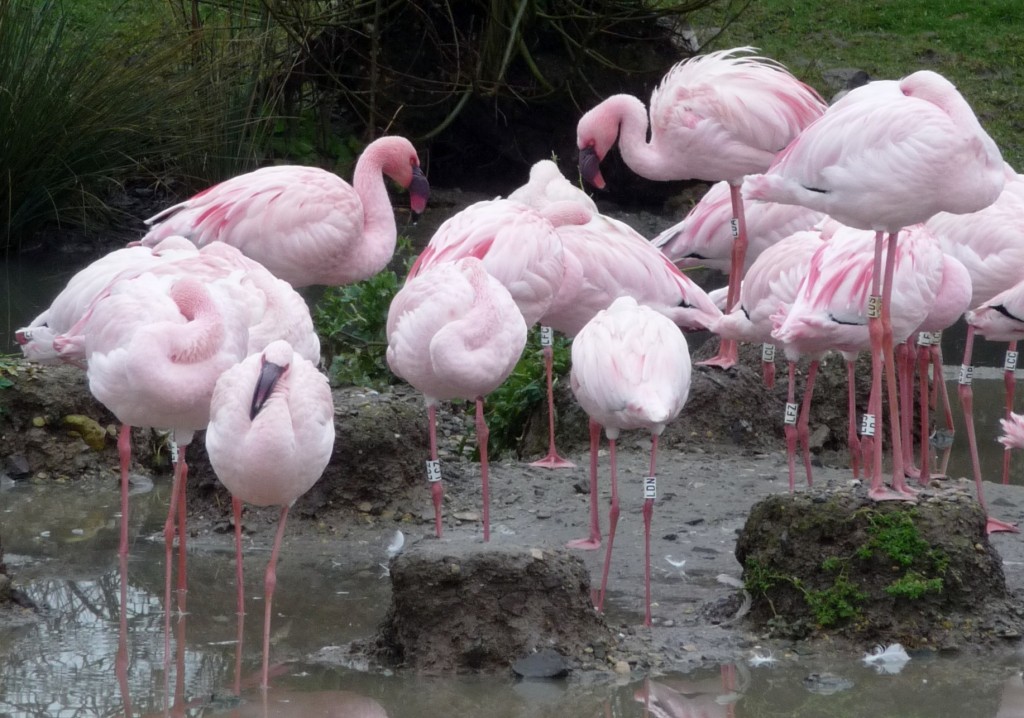In the pink (bad pun I know...!)
February is upon us and spring is getting closer. The birds seem to sense this change in the weather and have been showing signs of breeding behaviour and courtship. Whilst it is obviously (too) early doors for the flamingos to be actually nest-building and thinking about laying eggs, group courtship dances are important cues that the birds use to get everyone in the right "mood" for breeding. In the mood for dancing almost. And this was clearly obvious today with a few attempts by several members of the flock of Caribbean flamingos warming up with some marching, wing-saluting and head-flagging. Fifteen birds appeared to be important catalysts for breeding behaviour in the flock, and whilst it got off to a little of a half-hearted start, their activities certainly galvanised the other flamingos into having a go too.
[yframe url='http://www.youtube.com/watch?v=hef2PhnQpXQ']
It is important to identify these important birds that help initiate breeding. With flamingos being taxing to get breeding at the best of times, if we can pick out birds that want to breed (i.e. that start the courtship dances) we can set the scene for them (change enclosure layout, build nests, alter water levels) to encourage every bird in the flock to follow suit. So what does one of these key player look like? Well, for a start they are quite often one of the most brightly coloured in the flock, or one of the largest birds. The photo of the greater flamingo below shows this normally palest of flamingos in full breeding dress. So this individual is clearly ready and fired up to begin courtship.

And then there are these splendid birds. I have never seen the lesser flamingos colour up so brightly before (anywhere in captivity for that matter, so well done to all of the avics for getting the birds into this state). Breeding plumage in lesser flamingos is a deep crimson colour, with the birds' beaks flushing a dark red (almost black colour). You can see this lovely breeding plumage in this link here: http://www.arkive.org/lesser-flamingo/phoeniconaias-minor/image-G12485.html and it gives a good comparison of the plumage differences in greater and lesser flamingos. Keep an eye out for the changes in the birds' colouration on your next visit to a WWT centre that houses flamingos.




